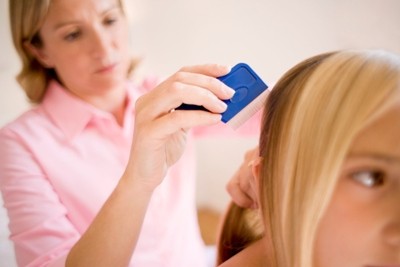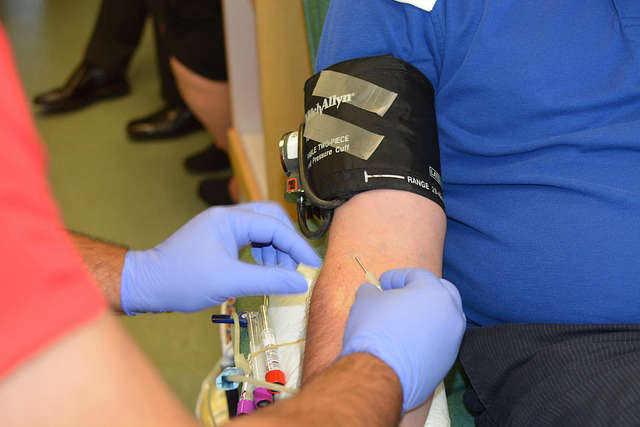
A case of head lice in your home can be not only an itchy situation, but very time consuming as well.
OXFORD COUNTY - Schools often see an increase in head lice cases when returning from Christmas break, March break and summer holidays.
Caroline Bonham, Director of Services for Lice Squad London says during these times, people are socializing more - kids are having sleepovers and it usually brings a spike in cases.
Bonham says despite what many people believe, the spread of lice is caused mostly by head to head contact - not sharing combs, hats or clothing. "They don't want to colonize, it's not like they smell out a new person and go and spread to them likewise from a hat. There's nothing in a hat for them, they need a blood source which is unfortunately the blood from your scalp and they need the heat and humidity of your head as well, they like that nice warm place so they're not wanting to be on a hat or a coat."
Bonham encourages people who have a case of head lice in their house to concentrate on the head and not the home. "I've had people say they've taken their drapes to the dry cleaners, absolutely go crazy on the house meanwhile the lice are reproducing in their kids hair. So we say put down the mop and get out the comb. Dousing the hair with hair conditioner, you want to take a lot of time, very small sections and start combing the hair out."
Bonham says the first combing will usually take 90 minutes, depending on the length and type of hair. Subsequent combings typically take 10 to 15 minutes. She suggests manually removing the lice as oppose to chemically trying to kill them. Purchasing a specialized comb for removing lice is your best bet for tackling the problem.
Preventative tips include keeping long hair tied back or braided, avoiding head to head contact and adding tea tree oil to your shampoo or in a spray bottle and spritzing your hair is another option.
Bonham highlights that the bugs do not jump, hop or fly -- they crawl from strands of hair to another when heads come in contact with each other. She says an example is when people are taking a "selfie" and are standing cheek to cheek, the hair could be touching or for instance while sleeping side by side.
Tune into Tuesday's edition of the Heart FM Healthbeat when Bonham talks about a study from the Journal of Medical Entomology done last March that proves the bugs have mutated so that they are resistant to perythrins/permethrin, the common ingredient in many over the counter remedies.



 New Coaches Coming to Tavistock Braves
New Coaches Coming to Tavistock Braves
 Norfolk OPP Investigation Leads to Charge
Norfolk OPP Investigation Leads to Charge
 U14 Girls Oxford Attack Continue Season
U14 Girls Oxford Attack Continue Season
 Province Increasing Speed Limit on 10 Sections of Highways
Province Increasing Speed Limit on 10 Sections of Highways
 EZT Strategic Plan Survey Closing Soon
EZT Strategic Plan Survey Closing Soon
 Realtors Care Food Drives Returns!
Realtors Care Food Drives Returns!
 Plattsville Celebrates New Housing Complex
Plattsville Celebrates New Housing Complex
 Two Have Licence Suspensions in Oxford
Two Have Licence Suspensions in Oxford
 False 9-1-1 Calls Hit Norfolk County
False 9-1-1 Calls Hit Norfolk County
 Woodstock Choralaires Hosting 70s Themed Show
Woodstock Choralaires Hosting 70s Themed Show
 Thamesford Tim Hortons Accepting Smile Cookie Preorders
Thamesford Tim Hortons Accepting Smile Cookie Preorders
 Three Vehicle Crash Investigation in Brant
Three Vehicle Crash Investigation in Brant
 News Poll: Blood Donation
News Poll: Blood Donation
 WCI Red Players Present: Concert for the Cure 2024
WCI Red Players Present: Concert for the Cure 2024
 Oxford Resident Charged with Shoplifting
Oxford Resident Charged with Shoplifting
 Earth Day is Celebrated in Woodstock
Earth Day is Celebrated in Woodstock
 One Man Charged after Fraudulent Activity
One Man Charged after Fraudulent Activity
 Norfolk OPP Catch Impaired Driver
Norfolk OPP Catch Impaired Driver
 Woodstock Navy Club Welcomes Universal Washroom
Woodstock Navy Club Welcomes Universal Washroom
 Oxford County Waste Survey Closing Soon
Oxford County Waste Survey Closing Soon



Comments
Add a comment